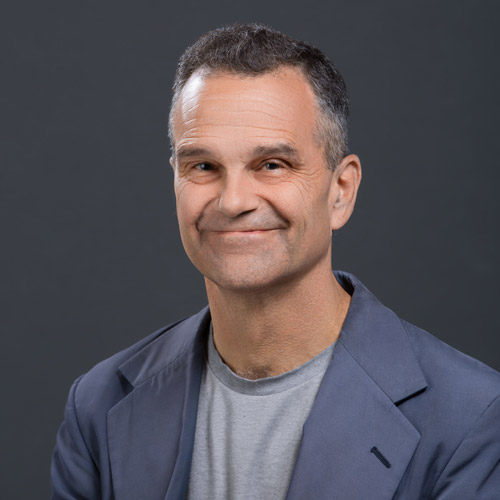Holy Burkas, Batman!
BU doctoral student probes rise of Muslim comic book superheroes
In the slideshow above, view comic book frames and images of Muslim superheroes. Images courtesy of Marvel Comics and DC Comics. Photo by Kalman Zabarsky
In 2009, Image Comics issued a $1 book with a cover depicting Barack Obama landing a right cross on Osama bin Laden. The presidential punch pales next to bin Laden’s real-life end, but sure as radiation enlarges Bruce Banner into the Incredible Hulk, the al-Qaeda leader’s demise made the Obama-Osama cover a collector’s item that now sells for $100.
Comics expert A. David Lewis (GRS’11), who is studying for a doctorate in religion and literature, sees a bigger, more surprising development than a bonanza for comic book collectors. Lewis sees the emergence of the Muslim superhero.
For all their alien/underwater/superhuman evildoers, says Lewis, comics have on occasion borrowed villains from the real world—the Image cover updated one from World War II showing Captain America slugging Hitler. The year after 9/11, Marvel Comics introduced Dust, a Muslim “mutant” (superhuman) member of the famed X-Men, only her eyes visible beneath her niqab. Born in Afghanistan, she can change into a blinding, skin-shredding sandstorm. Then there’s M, whose super strength, telepathy, and flight are the least obvious of her attributes (buxom and curvaceous, she’d shame Wonder Woman as an adolescent boy’s fantasy). M debuted in 1994. She revealed this year that she’s Muslim.
Meanwhile, rival publisher DC Comics recently brought out Nightrunner, an Algerian Muslim immigrant recruited by Batman, drawing charges from some American readers that DC is PC. Batman, they groused, should have deputized a native Frenchman.
What’s up with the new Islamic heroes? Religion, once taboo in comics, now gives characters a foothold in readers’ experience, says Lewis (below), who has written comics and graphic novels and edited Graven Images: Religion in Comic Books and Graphic Novels, a collection of scholarly essays. His dissertation details depictions of the afterlife in comics and other pop culture.

The comics are “already dealing with these incredibly fantastic characters: flying characters, alien characters, underwater characters,” he says. “There’s such a suspension of disbelief that they needed to ground them more in the readers’ real world” with religious references. He points out that both the X-Men and Muslims are victimized minorities.
Although Lewis’ dissertation supervisor, Bryan Stone, a School of Theology professor and associate dean, is not a comic book fan, he finds Lewis’ PhD work fascinating. “Who knew that superheroes have so many engagements with alternative dimensions of space and time, especially zones of afterlife?” he says. “It tells us some interesting things about our own abilities as humans to imagine the self in ways that challenge and stretch conventional religious narratives.”
For much of the Cold War, Lewis says, mainstream comics avoided religion and tended to use communists when they needed real-life villains. Then the 1973 Arab oil embargo and the 1979–1981 Iranian hostage crisis turned the comics’ gaze toward the Middle East, and the Hulk embarked on global adventures that included evil Arabs. But if that’s your scenario, Lewis says, you “do also have to opt for at least the token opposite…a token superhero,” and in 1980, the Hulk series introduced the Arabian Knight, “our first headlining, Middle Eastern superhero,” replete with a flying carpet and a scimitar that fired force beams and could pierce anything. He lasted about five years. The comics’ interest in Arab characters receded along with the price of oil in the late ’80s and the shift in national angst towards the rising economic sun of Japan.
Then came 9/11. While American interest in Islam led to Muslim heroes, Muslim villains (fictional ones, anyway) have been rare, which Lewis attributes in part to publishers “playing it safe,” not wanting to muck with either Islamophobia or offending potential customers. Frank Miller, creator of the Batman Dark Knight series, announced in 2006 that he was writing a graphic novel pitting the Caped Crusader against bin Laden. He later announced that he’d substituted a new superhero in the book, which he targeted for publication this year. It’s unclear how he’ll proceed in the wake of bin Laden’s death.
What is clear is that Muslims on the comics pages confront the conundrum of their flesh-and-blood counterparts: their community views them with suspicion. Lewis says non-Muslim heroes wonder, “Can they truly represent the American way? Could they really be on our side? When Dust joins the X-Men, these persecuted American mutants don’t really know if they can trust her. The comic book creators can have it both ways. They can present an altruistic Muslim hero, but also reflect the Islamophobia.”
Lewis thinks our interest in Muslim heroes may wane if and when another global hot spot bumps the Middle East off the front pages, but for now it’s clear that the comic-book bug has bitten the Arab world. America invented the superhero comic book in the 1930s, but Kuwait’s Teshkeel Media has created a comics series about the 99, an international band of superheroes whose powers are the 99 Koranic virtues of Allah, such as wisdom and love. The company distributes a million comic books a month in Islamic countries. The creator read American comics as a boy while summering in New Hampshire, growing up to create his own heroes.
Now there’s a storyline the Justice League would approve.
Rich Barlow can be reached at barlowr@bu.edu.

Comments & Discussion
Boston University moderates comments to facilitate an informed, substantive, civil conversation. Abusive, profane, self-promotional, misleading, incoherent or off-topic comments will be rejected. Moderators are staffed during regular business hours (EST) and can only accept comments written in English. Statistics or facts must include a citation or a link to the citation.